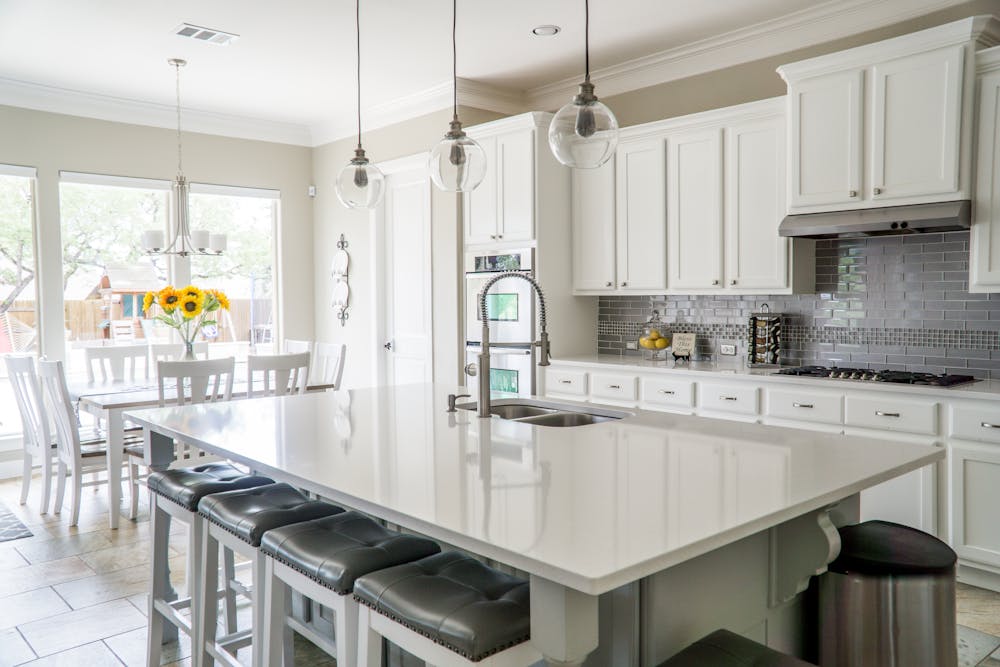Reviews
How Organized Kitchens Make Healthier Living Easier

A well-kept, well-ran kitchen does more than be aesthetically pleasing—it enables healthier consumption as well as better day-to-day habits. By having a home for everything, cooking is quicker and less harrowing. It is easier to prepare healthy food when ingredients can be found quickly and mess doesn’t interfere. Organization enables waste reduction, finances, as well as mindful selections.
A well-organized kitchen also fosters consistency. It is knowing what is in your pantry that will guide you into balanced-meal plans and prevent the need for takeout or processed meals. With reduced madness and increased clarity, mealtimes become a fun routine, not a chore. It’s the little thing that makes all the difference—imposing order, health, and serenity into yourdaily routine.
Decluttering for Better Choices
A cluttered kitchen makes healthy eating harder. When countertops are filled with unused appliances or expired items, it becomes stressful to cook or even plan meals. Decluttering brings clarity—it helps you see what you actually use and removes distractions that lead to unhealthy habits. Many people find that setting up affordable storage solutions, like labeled bins or drawer organizers, makes it easier to maintain order. Keeping things visible and accessible encourages smarter choices, like reaching for fresh produce instead of processed snacks.
A simple rule is to keep only what you need and love. The less clutter you have, the more space you create for meal prep, creativity, and calm. A clean environment naturally supports better decisions about food and health.
Myth vs reality: Many think decluttering means throwing everything away or buying expensive organizers. In reality, it’s about creating space that works for you—using simple, practical systems that keep your kitchen functional and inviting.
Smart Storage for Fresh Foods
A healthy kitchen depends on how food is stored. Fresh ingredients last longer and stay safer when properly organized. Grouping items by type—like vegetables, fruits, or proteins—makes it easier to see what’s available and prevents waste. Labeling shelves or containers helps everyone in the household know where things belong.
Refrigerators benefit from clear bins that separate items by category, while dry goods stay fresher in sealed containers. These small systems save time when cooking and make grocery planning simpler.
Good storage habits also promote balanced eating. When fruits and vegetables are easy to reach, they become the first choice for snacks or meals. With a few thoughtful adjustments, any kitchen can support healthier living—turning organization into an effortless way to stay on track.
Meal Prep Made Simple
Planning meals ahead is one of the best ways to stay healthy and save time. However, many readers wonder how to make meal prep easy without turning it into a full-day project. Here are some common questions people ask when organizing their kitchens for meal prep success.
How can I simplify meal prep at home?
Start by choosing two or three main recipes per week. Cook in batches, portion meals in reusable containers, and store them by day. Keeping cooked grains, proteins, and vegetables ready to mix helps you create balanced meals quickly.
What kitchen setup works best for meal prepping?
A clear workspace with organized tools makes a big difference. Keep knives, cutting boards, and measuring cups within reach. Label containers with contents and dates to prevent confusion or waste.
How long does prepared food stay fresh?
Most cooked meals last three to four days in the fridge and up to three months in the freezer if sealed properly. Always cool food before storing it.
Meal prep works best when organization supports convenience. A tidy, labeled, and accessible kitchen makes healthy eating effortless throughout the week.
Tools That Support Healthy Habits
The right kitchen tools make healthy living more practical. You don’t need high-end gadgets—just reliable basics that simplify cooking and storage.
Fast actionable tips:
- Use glass containers to store leftovers safely.
- Keep a fruit bowl visible for healthy snacking.
- Invest in a quality chef’s knife for faster prep.
- Use drawer dividers for utensils and small tools.
- Plan weekly grocery lists based on current inventory.
Practical organization builds consistency. The easier it is to cook and clean, the more likely you are to stick with healthy habits.
Common mistakes to avoid: Many people overbuy gadgets they rarely use or neglect to maintain what they already have. Others forget to rotate food items, leading to waste. Keep systems simple, consistent, and easy to maintain.
Family Involvement and Mindful Eating
We have a nutritionist who one time narrated the story about the family she was working with who changed their health just by rearranging their kitchen. Prior to that, their pantry was stocked with sugary snacks, and fresh food was kept stashed in drawers. They desired better food but got frustrated with mess and time constraints. They organized the new way—emptying the unwanted, signing the shelves, and making the vegetables and fruits prominent. In one month, the adults and the children were grabbing the better choices without much consideration.
The transformation wasn’t merely physical—it was psychological. Mealtimes were more tranquil, cooking was less strenuous, and grocery browsing more purposeful. By engaging the whole family, the process was made sustainable and fun. Where the whole family is part of the organizing process, tidiness is second nature.
Benefits versus risks: Healthy eating, waste reduction, and increased control over mealtimes are the benefits of a structured kitchen. Risks occur when the system is too hard or too rigid, becoming stressful rather than liberating. Flexibility and simplicity are the reasons why the system must be kept low-key and high-effective.
This scenario illustrates that even small moves, such as redefining a pantry or engaging youngsters in menu-planning, can have mighty effects. An intentionally designed kitchen cultivates not only better nutrition, but also better family relationships.
Lasting Benefits of an Organized Kitchen
An organized kitchen isn’t just a clean space—it’s a foundation for better living. When your cooking area feels calm and inviting, making healthy meals becomes second nature.
Healthy habits grow where structure exists. Every label, container, and routine supports a lifestyle of clarity and care.
How organized kitchens make healthier living easier proves that wellness starts right where you prepare your food. With small, consistent actions, anyone can turn their kitchen into a space that inspires lasting health and happiness.

-

 Legal6 days ago
Legal6 days agoMichigan man JD Vance sentenced to 2 years for threatening Trump and JD Vance
-

 Politics1 week ago
Politics1 week agoU.S. to designate Maduro-linked Cartel de los Soles as terrorist organization
-

 Health7 days ago
Health7 days agoCambodia reports fatal H5N1 bird flu case in 22-year-old man
-

 World4 days ago
World4 days agoHurricane Melissa registered 252 mph wind gust, breaking global record
-

 Legal4 days ago
Legal4 days agoWoman in critical condition after being set on fire on Chicago train
-

 Politics7 days ago
Politics7 days agoEpstein survivors release PSA calling on Congress to release all files
-

 Legal4 days ago
Legal4 days ago1 dead, 2 injured in shooting at Dallas Walmart parking lot
-

 Legal3 days ago
Legal3 days agoSuspect in San Diego stabbing shot by authorities after fleeing into Mexico




